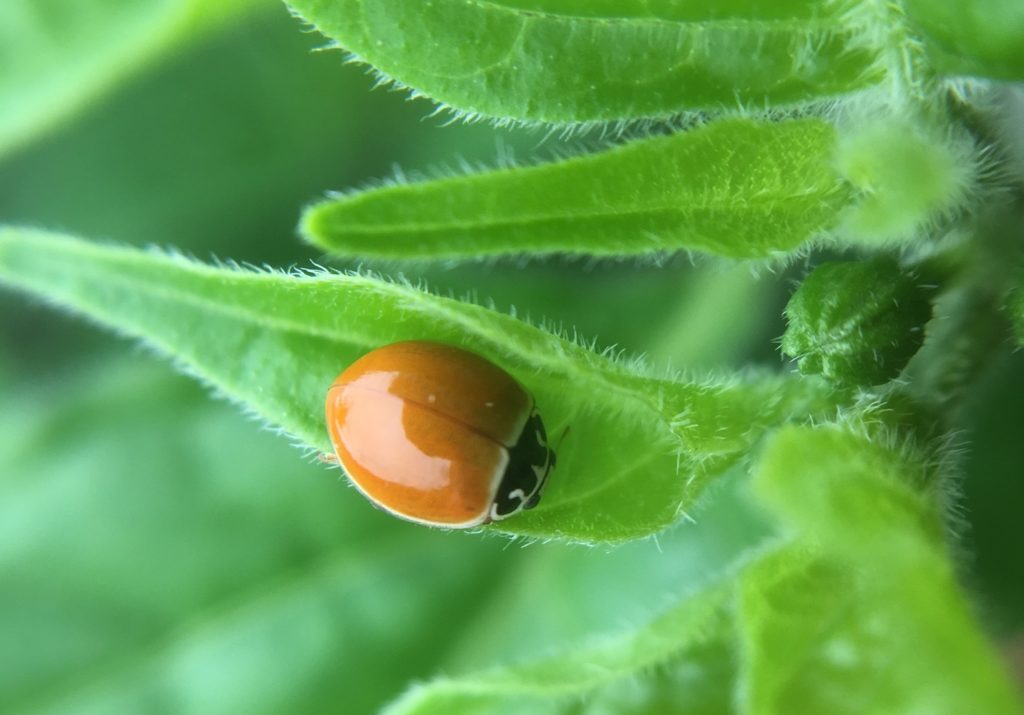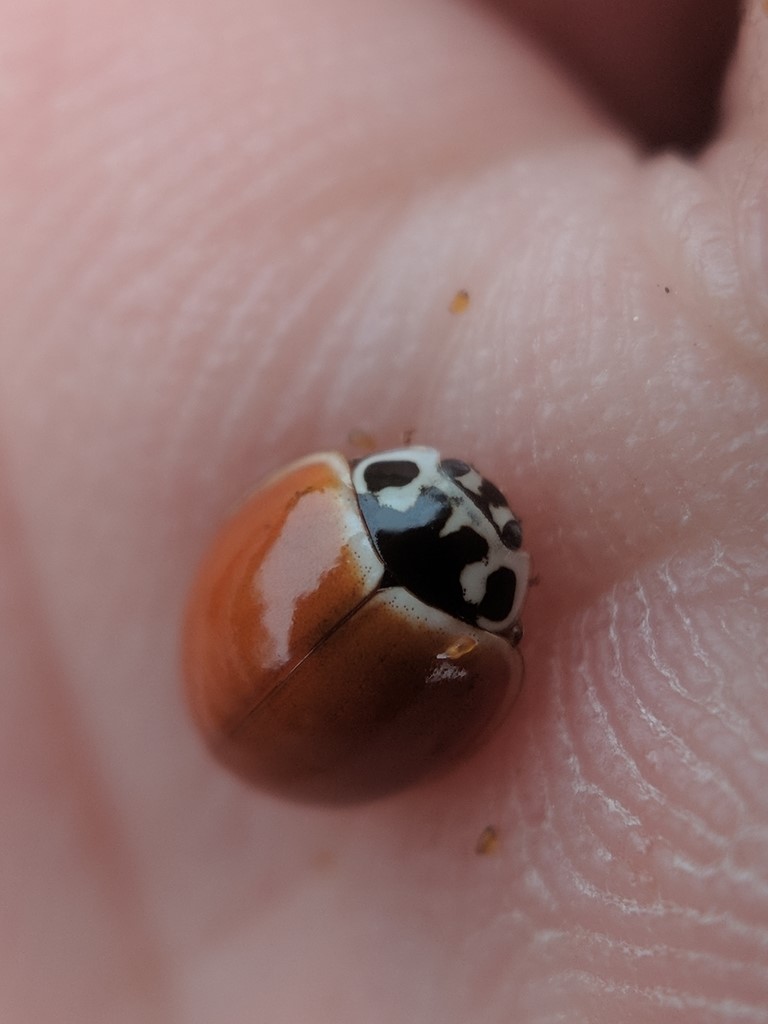
Polished Lady Beetle © Spencer Hardy

Polished Lady Beetle © Nathaniel Sharp
The Polished Lady Beetle is native to the eastern United States. This species lacks spots on its wing covers, which can range from light red to orange. They are most common in Vermont during the summer months, peaking in July.
Status
Native
Not ranked in the United States, and species is listed as Apparently Secure in Ontario. Several studies indicate that the species may be in decline, which may be in part due to the introduction of non-native lady beetle species and in part due to land use changes.
Last Seen
2021
Fun Fact
The Polished Lady Beetle is one of three spotless Lady Beetle species in the United States. They are usually differentiated by geographic location and the markings on their pronotum (area directly behind their head).
Identification
Polished Lady Beetles can range from 3.7 to 5.7 mm in length.
- The elytra are orange to red in color and are entirely devoid of spots.
- The pronotum has a white margin with two lobes extending into a black center patch, creating the appearance of an ornate white “m” on a black background.
- The head is black with two white triangles.
- Often confused with the Asian Lady Beetle.
Habitat
Fields, crops, and brushy habitat. One study indicated that Polished Lady Beetles have a preference for deciduous and brushy habitat, however they also utilize herbaceous species such as clover and alfalfa.
Range
North to southern Canada, west to Wyoming, south to southern Mississippi, and east to the coast.
Food
Aphids and other larva.
Life Cycle
Adults are active in the spring through late summer.
More Information
You can find more information about Polished Lady Beetles using the following links:
Vermont Distribution
Visit the iNaturalist Observation Map and their Occurrence Record to find out where Polished Lady Beetles have been seen in Vermont.






